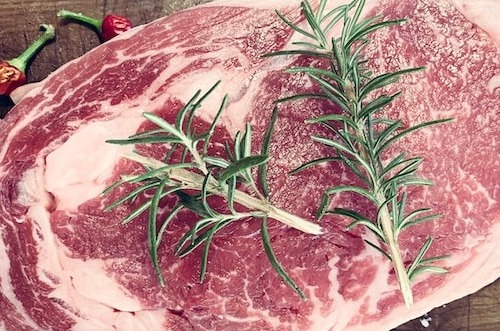W43: Beef Update

In W43 in the beef landscape, the United States Department of Agriculture (USDA) expects China to import approximately 3.6 million metric tons (mmt) of beef in 2023, accounting for nearly 35% of global purchases. This substantial import volume underscores China's heavy reliance on external sources to meet its growing beef demand. China's import patterns exhibit fluctuations, with moments of high demand and periods of relative calm, leading to notable price oscillations while addressing the country’s increasing supply needs. Chinese Customs data indicates that beef imports have already reached 2.04 mmt so far in 2023, surpassing the 2022 volumes by 5%. However, prices have decreased significantly, with Sep-23 rates at USD 4,924 per metric ton (mt), a 27.5% year-on-year (YoY) drop and the lowest level since late 2020 during the COVID-19 pandemic. From Jan-23 to Sep-23, Brazil was the dominant supplier with 41% of the market, followed by Argentina contributing 20%, Uruguay with 10%, Australia with 8%, and the United States (US) with 6% of the total.
The wholesale price of Korean beef soared by 13.1% week-on-week (WoW) to USD 14.86 per kilogram (kg) in W43, the first time in a month it exceeded USD 14.82/kg. This price surge followed the outbreak of lumpy skin disease in South Korea's Chungcheongnam-do and Gyeonggi provinces on October 20. Korean beef prices had been relatively stable, ranging from USD 11.86 to 12.6/kg before the outbreak. The wholesale price increase has affected consumer prices, with grade 1 sirloin quotes rising by 8.1% WoW to USD 75.96/kg. These fluctuations are attributed to transient supply and demand imbalances due to lumpy skin disease quarantine measures. The outbreak led to the suspension of movement in livestock facilities, with some regions extending these measures. Farms in the Gyeonggi and South Chungcheong regions are promoting vaccination and quarantine measures for three weeks.
Despite the typical slowdown in closures in October, the average price for live cattle sales has remained robust in Brazil, although it falls significantly below the volumes recorded in the same period over the last three years. As of the penultimate business day in W4 of October 2023, the average daily price for fat cattle reached USD 48 per arroba, a 6.3% month-on-month (MoM) increase but a 15.3% YoY decline. The cumulative prices for Oct-23 averaged USD 47.39/arroba, a 13.9% MoM increase but a 20.4% YoY reduction. The year-to-date (YTD) average price reached USD 51.42/arroba, a 20.5% decrease compared to the same period in 2022 and a 15.6% drop compared to 2021, but an increase of 19.7% over 2020.
Recent rainfall and an expected increase in forage availability have prompted Argentine cattle producers to transition from a liquidation phase of 2.5 million cattle to a retention stage. However, this shift brings challenges for consumers since meat prices surged by 15% to 20% in recent weeks. The price increase was attributed to the rainy weather, election-related uncertainty, and a government-induced devaluation for exporters, which boosted export profitability by 45% to 50%. The reversal to retention and recovery of the stock will reduce meat supply in the short, medium, and long term. Experts predict that this cycle will last for about two years, causing meat supply to drop by 300 to 350 thousand mt in 2024, translating to an eight-kilogram drop per capita.
The meat price dynamics in Argentina will largely depend on consumer demand, posing challenges to the government's efforts to control recent inflation. Experts emphasize that these price increases are insignificantly influenced by global prices, as China is currently paying up to 30% less for Argentine meat compared to 2022. The primary concern is the effective exchange rate received by meat exporters, particularly amid the recent 70/30 devaluation, which has significantly impacted their earnings.


